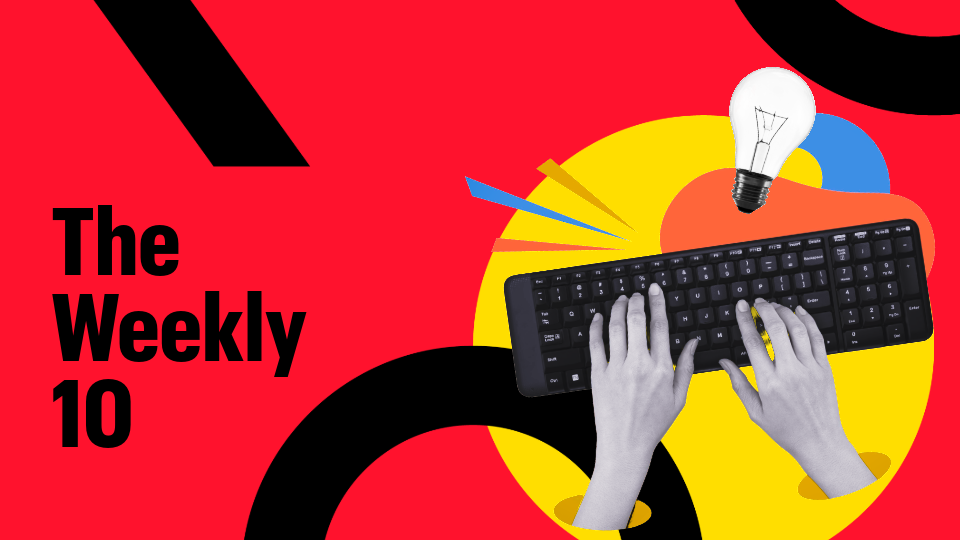Welcome to The Week in Generative AI, a weekly column for marketers from Quad Insights that quickly sums up need-to-know developments surrounding this rapidly evolving technology.
OpenAI leadership shuffle
As we noted in the previous edition of The Week in Generative AI, Sam Altman, OpenAI’s CEO, was (temporarily) fired on Nov. 17. OpenAI’s board expressed a lack of confidence in Altman’s leadership. Altman and Greg Brockman — OpenAI’s former president who resigned after being demoted from the board — were reportedly set to join Microsoft as part of a new AI division, while nearly all of OpenAI’s employees had threatened to leave and join them unless Altman was reinstated. On Nov. 22, it was announced that Altman would return as CEO, along with Brockman as president.
As of this Wednesday, just in time to celebrate the one-year anniversary of the initial release of OpenAI’s ChatGPT, the chatbot that changed the world, their return was finalized, as Marketwatch’s Mike Murphy reports. Microsoft CEO Satya Nadella had lobbied for Altman’s reappointment, and the company (a 49% owner of OpenAI) will now have a non-voting seat on the OpenAI board.
Jeffrey Dastin and Aditya Soni from Reuters note that “the return of Altman could potentially usher in a new era for the startup, which had long juggled concerns among staff about AI’s dangers and its potential for commercialization.” Semafor’s Louise Matsakis and Reed Albergotti report that “the lack of details [about Altman’s firing] has been unnerving for some OpenAI workers” and that “a number of them began pursuing job opportunities at competing AI companies.”
The question remains: Why was Altman fired? As Melissa Heikkilä writes in the MIT Technology Review, “we still don’t know all the details,” though “there have been reports that researchers at OpenAI had made a ‘breakthrough’ in AI that had alarmed staff members.” She cites reporting from Reuters and The Information that OpenAI “researchers had come up with a new way to make powerful AI systems and had created a new model, called Q* (pronounced Q star),” that could be one step closer to “artificial general intelligence, a much-hyped concept referring to an AI system that is smarter than humans.”
Related Coverage:
- “Sam Altman returns as CEO, OpenAI has a new initial board” (OpenAI blog)
- “Interview: Sam Altman on being fired and rehired by OpenAI” (The Verge)
- “OpenAI chaos not about AI safety, says Microsoft boss” (BBC)
- “OpenAI formalizes Sam Altman’s return, gives Microsoft non-voting board seat” (Axios)
- “Why Won’t OpenAI Say What the Q* Algorithm Is?” (The Atlantic)
- “About That Mysterious AI Breakthrough Known As Q* By OpenAI That Allegedly Attains True AI Or Is On The Path Toward Artificial General Intelligence (AGI)” (Forbes)
- “OpenAI’s Custom Chatbots Are Leaking Their Secrets” (The Verge)
SI publishes AI-generated writers, and no one is pleased
Sports Illustrated has come under fire for publishing articles by non-existent, AI-generated writers. Futurism’s Maggie Harrison broke the story with a deeply reported piece highlighting detailed biographies of SI authors, including “Drew Ortiz,” that portrayed them as real people, but her investigation revealed no evidence of their existence outside the publication; their profile pictures were found on a website selling AI-generated headshots.
Harrison interviewed multiple sources within the content creation process who confirmed the use of such fake authors and indicated that some articles were indeed AI-written. The Arena Group, Sports Illustrated’s publisher, blamed a contractor, AdVon Commerce, for the content but largely sidestepped the issue of AI use.
This practice was not confined to Sports Illustrated; Harrison found similar patterns in other Arena Group publications, including TheStreet, where “these fake writers are periodically wiped from existence and their articles reattributed to new names, with no disclosure about the use of AI,” Harrison reports.
Related coverage:
- “‘Sports Illustrated’ is accused of posting articles by writers created by AI” (NPR)
- “Sports Illustrated Writers ‘Horrified’ By Report That AI-Generated Articles Are Being Published Under SI Banner” (Deadline)
Amazon launches AI chatbot business
Amazon has unveiled Q, a business-oriented chatbot powered by generative AI, marking its entry into the rapidly evolving field, The Associated Press reports.
Announced at an Amazon Web Services (AWS) conference in Las Vegas, Q represents Amazon’s counter to the buzz created by OpenAI’s ChatGPT. CNBC’s Jordan Novet reports that “Q is named after the character by the same name in the James Bond movies or the Q character in the Star Trek television shows, depending on which AWS executive you ask.”
According to the Amazon Press Center, customers using Q “can get fast, relevant answers to pressing questions, generate content, and take actions — all informed by a customer’s information repositories, code, and enterprise systems.”
Related Coverage:
- “Amazon’s Q AI assistant lets users ask questions about their company’s data” (The Verge)
- “Now AWS gets a ChatGPT-style Copilot: Amazon Q to be your cloud chat assistant” (The Register)
Further reading
- “Meta disbanded its Responsible AI team” (The Verge)
- “Nvidia C.E.O. Is Not Worried About Rising A.I. Industry Competition” (The New York Times)
- “Anthropic slashes AI pricing amid rising competition” (VentureBeat)
- “The Problems Lurking in Hollywood’s Historic AI Deal” (Wired)
- “Merriam-Webster’s word of the year definitely wasn’t picked by AI” (NPR)
- “AI is adding to marketers’ responsibilities while diminishing their influence” (MarTech)
- “The technology behind ChatGPT is evolving insanely fast” (Axios)
- “Generative AI generates tricky choices for managers” (The Economist)
- “How Gen Z Is Driving the Adoption of Generative AI in the U.K.” (The Hollywood Reporter)
- “Finding value in generative AI for financial services” (MIT Technology Review)
- “The Do’s and Don’ts of Using Generative AI in the Workplace” (The Wall Street Journal)
- “Mastercard launches Shopping Muse, an AI to help consumers find the perfect gift” (VentureBeat)
Thanks for reading.
If you’d like to catch up on prior installments of this column, start by heading to our last recap: “The Week in Generative AI: November 17, 2023”



